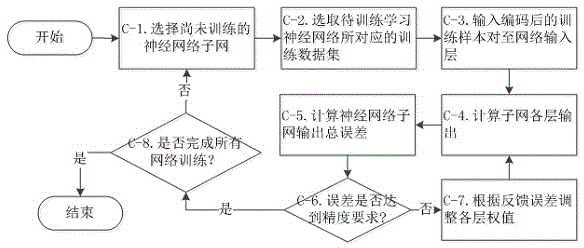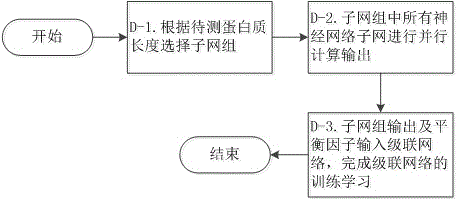Method for predicting protein association graphs on basis of cascade neural network structures
A neural network and network structure technology, applied in special data processing applications, instruments, electrical digital data processing, etc., can solve problems such as inability to optimize protein processing, inability to achieve parallel computing, low prediction accuracy, etc., and achieve good scalability , good parallel characteristics, and the effect of improving computing efficiency
- Summary
- Abstract
- Description
- Claims
- Application Information
AI Technical Summary
Problems solved by technology
Method used
Image
Examples
Embodiment Construction
[0048] Embodiments of the present invention will be described in further detail below in conjunction with the accompanying drawings.
[0049] In this embodiment, the method for predicting the protein association graph based on the cascaded neural network structure of the present invention is carried out on a computer with a dual-core CPU 2.13GHz and 6GB memory.
[0050] A method for predicting protein association graphs based on a cascaded neural network structure of the present invention, such as figure 1 shown, including the following steps:
[0051] A. Read the protein dataset, and initialize 6 neural network subnetworks and 1 cascaded network. This method adopts the standard neural network of 3 layers, namely input layer, middle hidden layer and output layer;
[0052] B. Determine whether the length of all proteins in the protein data set is in the range of 51 to 450, if the length of all proteins is in the range of 51 to 450, go to step D, otherwise go to step C;
...
PUM
 Login to View More
Login to View More Abstract
Description
Claims
Application Information
 Login to View More
Login to View More - R&D Engineer
- R&D Manager
- IP Professional
- Industry Leading Data Capabilities
- Powerful AI technology
- Patent DNA Extraction
Browse by: Latest US Patents, China's latest patents, Technical Efficacy Thesaurus, Application Domain, Technology Topic, Popular Technical Reports.
© 2024 PatSnap. All rights reserved.Legal|Privacy policy|Modern Slavery Act Transparency Statement|Sitemap|About US| Contact US: help@patsnap.com










